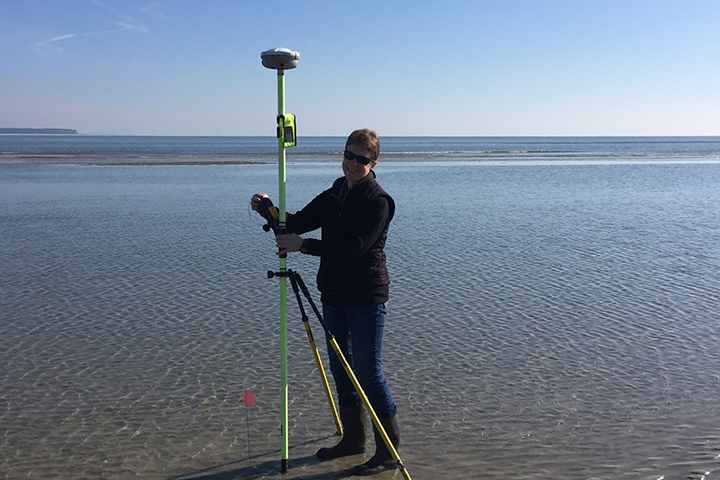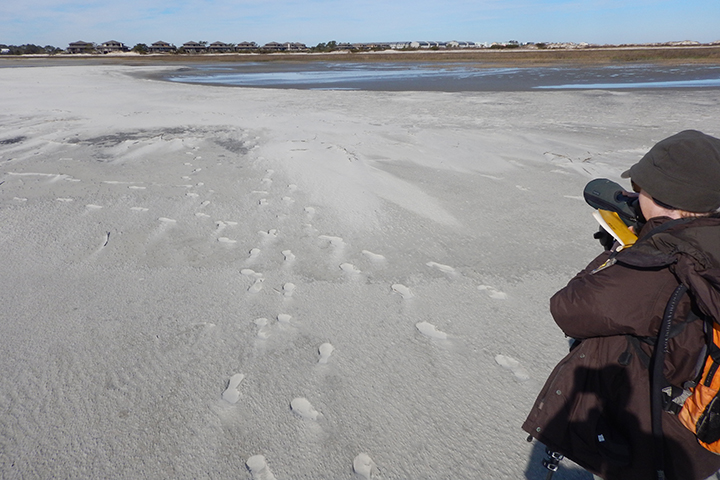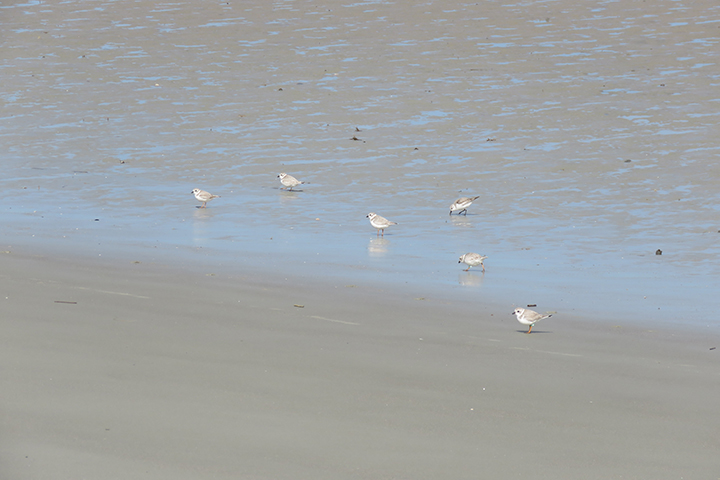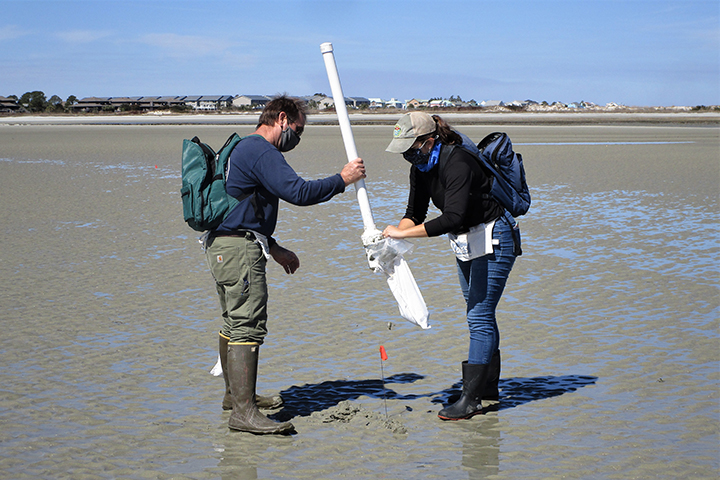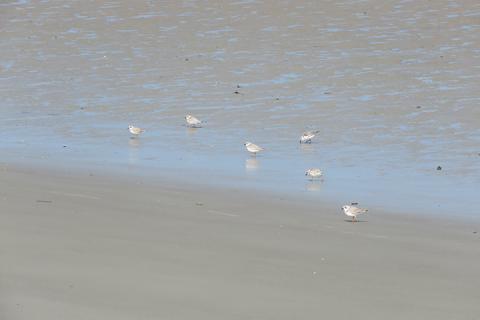
Staff from South Carolina Department of Natural Resources worked with ACE Basin NERR and U.S. Fish and Wildlife Service to fill a critical gap in understanding piping plover needs by quantifying foraging habitat characteristics of this declining shorebird species and developing a habitat assessment tool to inform state and federal permitting and habitat management activities.
The project
Shorebird populations are declining globally in the face of sea level rise, increasing coastal development, and shoreline modifications. The piping plover (Charadrius melodusand) and red knot (Calidris canutus) have exhibited population declines in recent years. The piping plover is a federally listed species that spends most of the year in its wintering range, including intertidal habitats in South Carolina. Recent research has established linkages between benthic prey abundance and foraging activity along South Carolina beaches; however, most of these projects focused on determining impacts from shoreline modification, rather than quantifying habitat characteristics. Identifying characteristics associated with optimal foraging habitat would help inform state and federal permitting and habitat management activities in areas these shorebirds inhabit.
A project team at the South Carolina Department of Natural Resources worked with the ACE Basin NERR, U.S. Fish and Wildlife Service, and other partners, including beach communities and conservation groups, to develop a habitat assessment tool for the piping plover. This easy-to-use tool was derived from new data collections in areas of high foraging activity, application of new genetic tools to distinguish preferred prey, and reanalysis of a decade of sampling data collected along the South Carolina coast. The tool allows for identification of important habitats and provides the user (e.g., state or federal biologist making recommendations about permit applications such as beach nourishment) an understanding of what is unique about each of these areas. Information was collected to further knowledge of red knot foraging areas, but more work is needed before there is sufficient information to develop a similar tool for red knots.
The impact
- Endangered species biologists, beach managers, and other interested groups better understand optimal piping plover foraging habitat characteristics.
- Those tasked with protecting endangered species and permitting coastal impacts as well as resource managers faced with managing beaches and intertidal habitats in the face of sea level rise, increasing coastal development and shoreline modifications, and declining shorebird populations now have a tool that helps them understand and protect habitat that is critically important for piping plovers.
- Impacts from this project are extending beyond South Carolina through dialogue with the international Piping Plover Coordinator’s Group (U.S. Fish and Wildlife staff and Canadian equivalents) about potential application of project results to other regions, both in terms of habitat protection and restoration potential.
